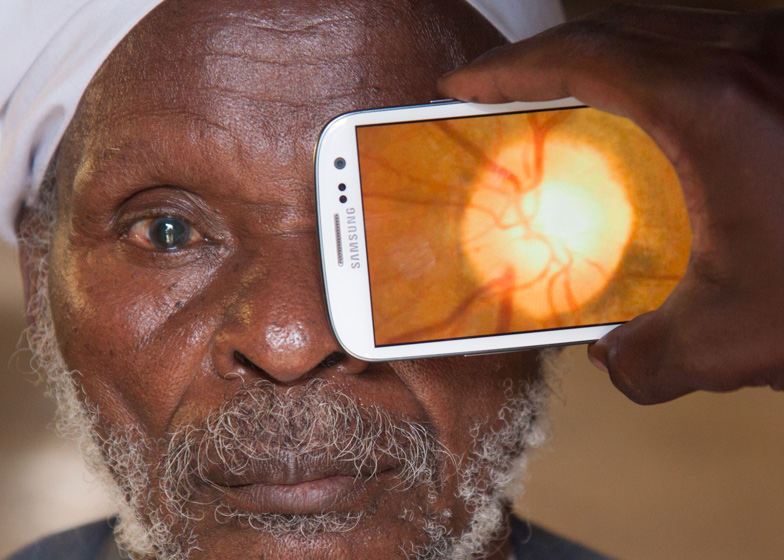The Portable Eye Examination Kit (Peek) aims to improve opthalmic health in low-income countries by adapting smartphones with clip-on hardware and an app, and is among this year's category winners for Designs of the Year 2014.
Created by a team of ophthalmologists, developers and engineers, Peek utilises a variety of technologies that can be used by a non-expert with minimal training to carry out a range of eye-health checks and help prevent and diagnose blindness.
Peek is led by a core team of four UK-based doctors, a hardware designer and a software developer.
"Our project got started during the planning of a study in rural Kenya," said the team in a statement. "The logistical headaches of getting all the equipment needed to remote locations provided the motivation to search for a better way - we got together to get on with building it."
The team realised that a solution might lie in the wide availability of smartphones in developing countries where "more people have access to mobile phones than running water," explained the team.
The portability of the phones means that Peek can be taken into people's homes, potentially transforming the way that eye health is treated in low-income and hard to reach regions of the world.
"285 million people worldwide are visually impaired, 39 million of these people are blind, 80 percent of blindness is avoidable," they added. "In the areas of greatest need, patients do not have access to diagnostics or treatment."
With Peek, the camera lens of a smartphone is used to carry out a cataract test, while basic vision is assessed using a shrinking letter on the screen.
A black plastic adapter slots over the top of the phone, harnessing the inbuilt flash to transform the camera into a device capable of scanning the back of the eye – a test that previously required expensive machinery and trained staff to operate it.
Images captured by the kit can be assessed in-app or uploaded to be viewed by a network of professionals. According to its developers, it can be used to diagnose blindness, visual impairment, cataracts, glaucoma, macular degeneration and diabetic retinopathy. A range of other less-common eye-related diseases can also be diagnosed with the kit, including signs of brain tumours and haemorrhaging.
Each set of patient data can be geotagged, to help with follow up treatment after a condition is diagnosed.
The kit is still in research and testing phases and is currently being trialled on a group of 5,000 people in Kenya.
"The research is comparing the easy-to-use, affordable Peek system against state-of-the-art hospital equipment, which costs more than £100,000 and requires a team of 15 trained personnel to operate," said the Peek team.
"Google-map integration allows a novel way to follow-up and treat patients. More broadly, such technology allows co-ordination of services, to target mass treatment campaigns to the regions of greatest need."
Another ongoing study is being carried out on an exhibition team in Antarctica to assess whether vision is affected by prolonged exposure to extreme cold and darkness.
"As the conditions are considered a surrogate to life in space, the data will provide valuable information for space programmes," said the Peek team.
The team also hope the kit will be useful in high-income countries, allowing eye tests to take place outside of dedicated clinics.
The project topped the Digital category for the Designs of the Year 2014 awards, announced last week. Dezeen is media partner for the awards and accompanying exhibition, on show at London's Design Museum until 25 August.

